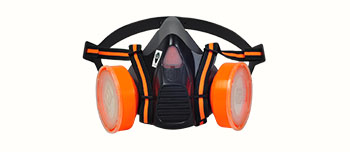Dust is one of the common occupational hazards in industries such as industrial production, construction, and mining. Long term exposure to high concentrations of dust can have a serious impact on the health of workers and even lead to serious occupational diseases. The following are the main hazards of dust to workers:
1. Respiratory system diseases
After dust enters the human body, it first affects the respiratory system. Long term inhalation of dust may lead to the following diseases:
Pneumoconiosis, such as silicosis, coal worker's pneumoconiosis, asbestos lung, etc., is caused by long-term inhalation of mineral dust leading to pulmonary fibrosis, which can seriously affect respiratory function and even endanger life.
Chronic bronchitis: Dust irritates the respiratory tract, causing symptoms such as coughing, sputum production, and wheezing.
Asthma: Certain dust particles (such as sawdust and grain dust) may cause allergic asthma.
2. Effects on the cardiovascular system
Long term inhalation of dust may increase the risk of cardiovascular diseases, such as hypertension and coronary heart disease. Partial dust (such as PM2.5) can enter the bloodstream and affect heart function.
3. Skin and eye damage
Skin problems: Certain dust (such as cement and chemical dust) may irritate the skin, causing dermatitis, eczema, or allergic reactions.
Eye damage: Dust entering the eyes may cause conjunctivitis, keratitis, and even lead to vision loss.
4. Cancer risk
Part of the dust (such as arsenic, nickel, chromium, etc. in asbestos and metal dust) has been listed as carcinogens by the International Agency for Research on Cancer (IARC), and long-term exposure may increase the risk of malignant tumors such as lung cancer and mesothelioma.
5. Other health impacts
Neurological damage: Certain metal dust (such as lead and manganese) may affect the nervous system, leading to symptoms such as memory loss and tremors.
Hearing impairment: In an environment where dust and noise coexist, workers may face the risk of hearing loss simultaneously.
How to prevent dust hazards?
Engineering control: Adopt measures such as wet operation, local ventilation, and enclosed equipment to reduce dust dispersion.
Personal protection: Wear dust masks (such as N95, KN95), goggles, protective clothing, etc. that meet the standards.
Health monitoring: Regularly conduct occupational health examinations to detect occupational diseases such as pneumoconiosis in the early stage.
Strengthen training: Improve workers' awareness of dust hazards and correctly use protective equipment.
conclusion
The harm of dust to workers cannot be ignored. Enterprises should strictly implement occupational health protection measures, and workers themselves should enhance their awareness of protection, avoid long-term exposure to high dust environments, and ensure their own health and safety.
 English
English





